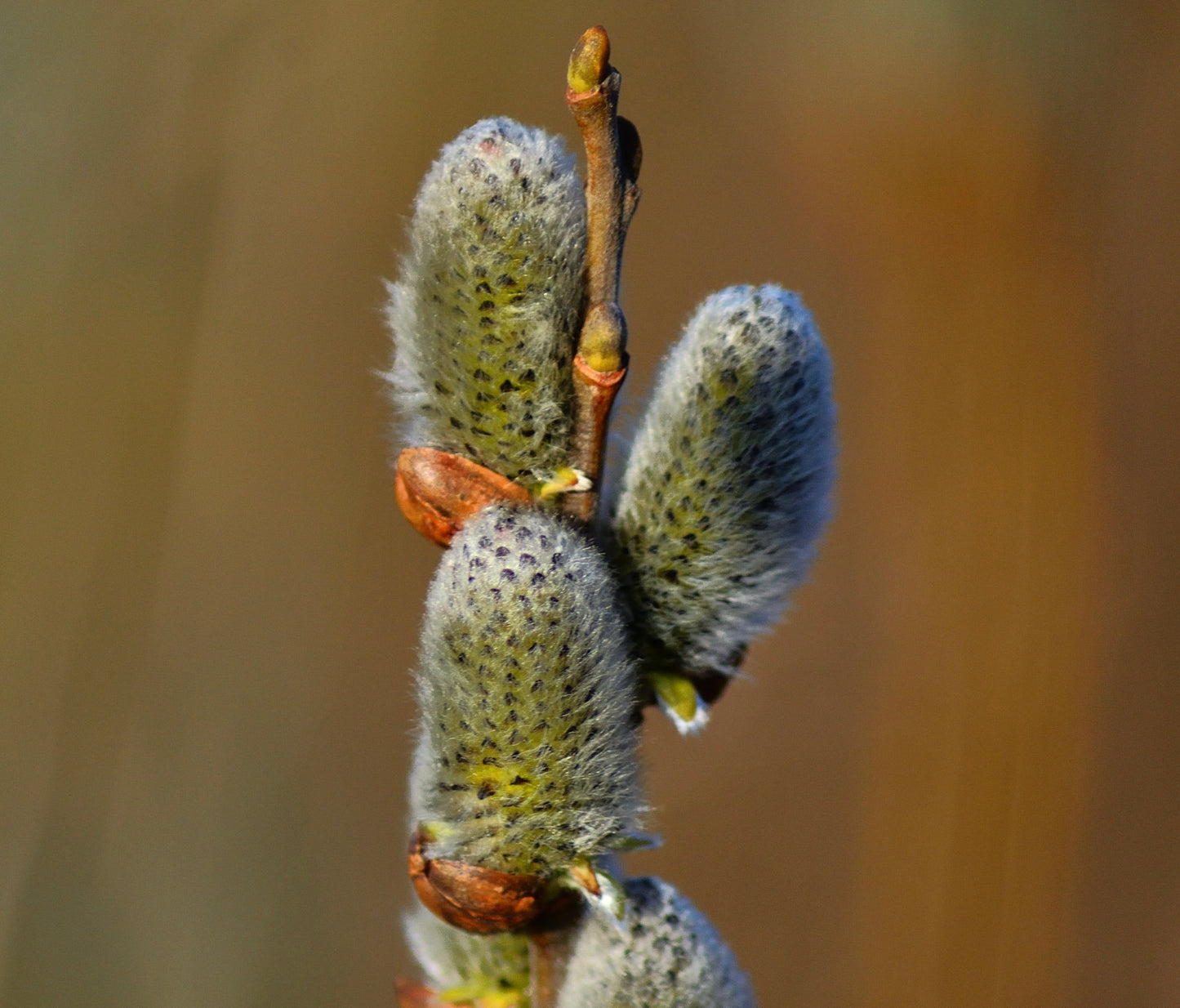Salix alba
Salix alba
Couldn't load pickup availability
Product Description
Salix alba, commonly known as White Willow, is a deciduous tree native to Europe and Western Asia, belonging to the Salicaceae family. With its graceful form and silvery foliage, White Willow is a charming addition to landscapes. Typically reaching heights of 50 to 80 feet, this fast-growing tree features slender branches and elongated leaves that are gray-green on top and whitish underneath, giving the tree its distinctive appearance. In early spring, before the leaves emerge, White Willow produces catkins that add interest to the tree's silhouette. Known for its tolerance of wet conditions, it's often found near water bodies like rivers and streams.
Cultivation:
-
Location: Plant Salix alba in a location with full sun to partial shade. While it prefers moist, well-drained soil, it can tolerate a range of soil types, including clay and loam.
-
Planting: Dig a hole twice the diameter of the root ball and at the same depth. Backfill with soil, and water thoroughly to settle the soil around the roots.
-
Watering: Keep the soil consistently moist, especially during the first growing season. Once established, White Willow can tolerate periodic drought but will benefit from supplemental watering during prolonged dry spells.
-
Fertilization: White Willow typically doesn't require fertilization if planted in fertile soil. However, applying a balanced fertilizer in early spring can promote vigorous growth.
-
Pruning: Prune White Willow in late winter to early spring to remove dead or damaged branches and to shape the tree as desired. Avoid heavy pruning, as excessive cutting can stimulate rapid regrowth.
-
Mulching: Apply a layer of organic mulch around the base of the tree to conserve moisture, regulate soil temperature, and suppress weed growth. Keep the mulch several inches away from the trunk to prevent rot.
-
Pest and Disease Control: While generally resistant to pests and diseases, White Willow may occasionally be affected by aphids, scale insects, or canker diseases. Monitor the tree regularly and treat any issues promptly.
-
Propagation: Propagate White Willow from hardwood cuttings taken in late winter to early spring. Ensure the cuttings have several nodes and are planted in a well-draining rooting medium.
By following these cultivation tips, you can successfully grow and enjoy the beauty of Salix alba in your landscape, whether as a focal point specimen or as part of a naturalized setting near water features.
IMPORTANT: Please be aware that picture 1 show adult plant not for sale, the offer is for a plant in the dimension indicated in title description.
SKU:BA-2139-S
Cultivation
Cultivation
Info and Disclaimers
Info and Disclaimers
Plant height:
Pot diameter:
Picture taken on:


